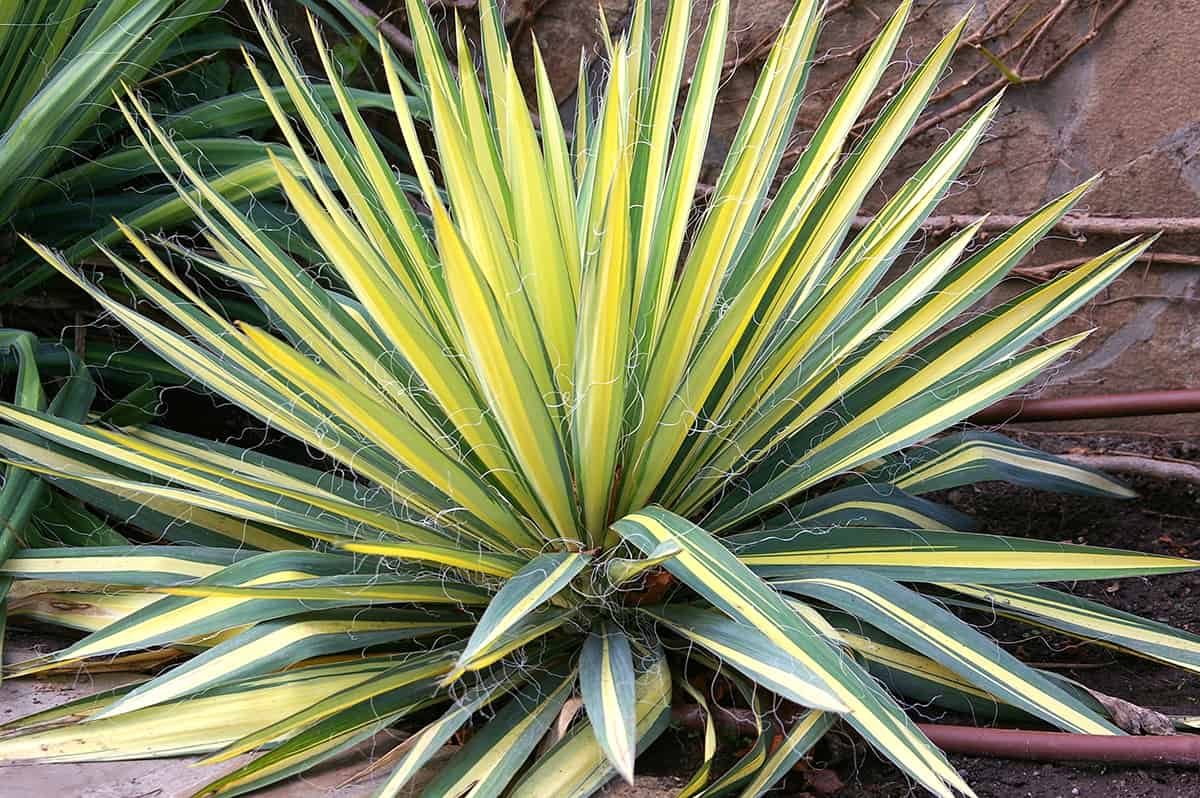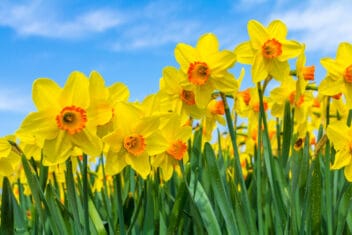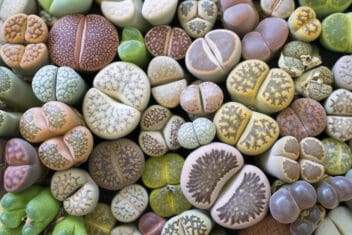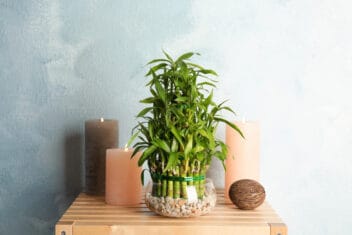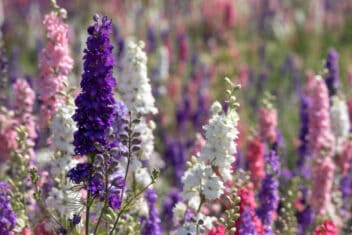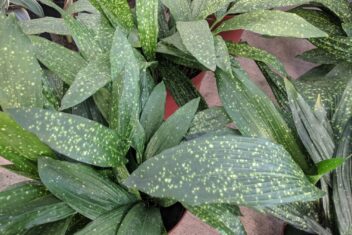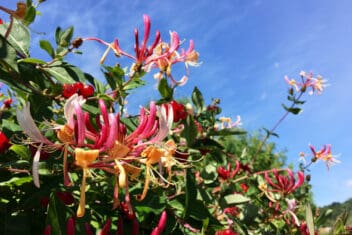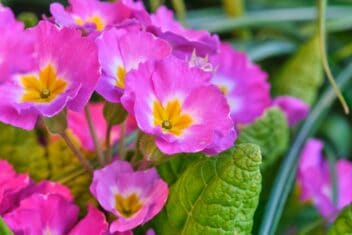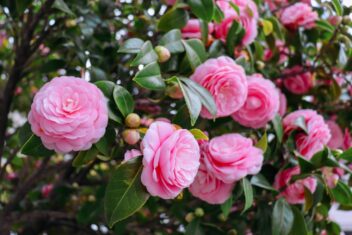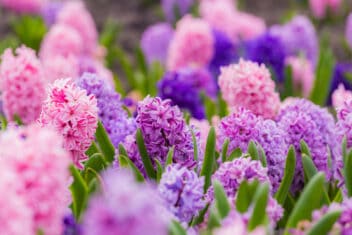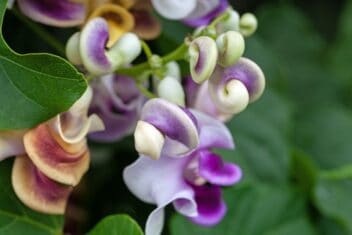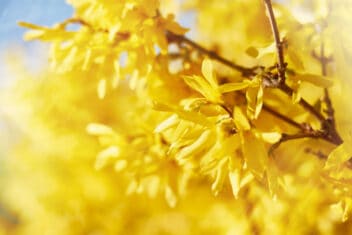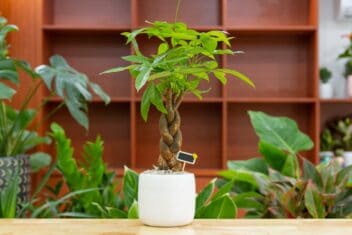I love yucca, which is why I have a lot growing around my homestead. They are so simple to propagate, plant, and raise.
You don’t have to do much to make them happy. They look good without maintenance and grow fast, so if you have an area of your landscape you want to be filled, yucca is a great choice. They also look fantastic in pots.
Best of all yucca is an evergreen that is drought tolerant, making it a popular choice for busy gardeners like me.
There are lots of varieties for the low-maintenance garden, so let’s talk yucca.
What is a Yucca?
From the family Asparagaceae, yucca is a perennial evergreen native to dry, hot areas of the US, Caribbean, and West Indies. They’re a familiar sight in the southwestern US and Mexico.
There are several species that are quite distinct from others, but most love hot, dry areas and don’t require a lot of water or attention.
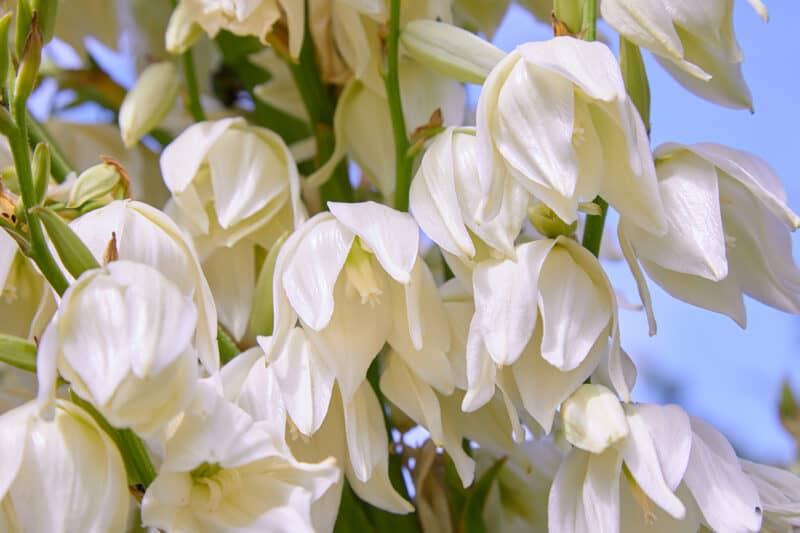
Not to be confused with yuca, which is the name for the edible root of the cassava plant, yuccas are normally used for landscaping and as ornamental plants. There are some yuccas that produce edible flowers and fruit, however, this requires a particular moth for fertilization. This moth only lives in the south-central and southwest US.
Many varieties can be used to make soap or shampoo.
Varieties of Yucca
There are a lot of varieties of yucca, but below are my handpicked ones I think are particularly worth looking at. They all have different looks and some are even good for making soap and shampoo.
I really could go on forever because there are so many varieties of this great plant. See what grows well in your area and what you like in a yucca. I guarantee you’ll find one or several you will love.
Spineless Yucca (Yucca elephantipes)
I started with this one because it is the most common outdoor variety in my area. It grows up to 30 feet tall but is also the variety you most often see in pots and suits the indoor environment perfectly.
Spineless in name and form makes it a safe yucca for growing inside, but be wary of the sharp point at the end of the leaves.
Adam’s Needle (Yucca filamentosa)
Also known as ‘Adam’s Needle and Thread,’ this variety has a historic place in Native American culture. The fibrous leaves are used for material and clothing and the roots for soap and shampoo.
The needle portion of the name comes from the very sharp point on the leaves. This is a trunkless variety that looks a little like flax with leaves that grow up to four feet in length.
If you’re lucky, ‘Adam’s Needle’ will flower in spring with an amazing display of white blossoms that hang like lanterns.
Soapweed Yucca (Yucca glauca)
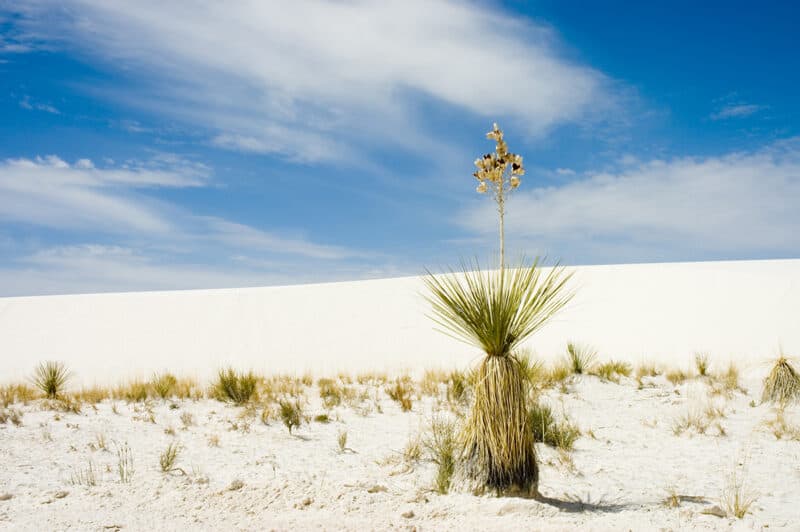
Grown mainly in central North America in the grasslands of deserts, it has sharp leaves that grow up to four feet. The roots are particularly good for soap and shampoo due to the high levels of saponin.
Between June and August, you may see green and white flowers with a beautiful fragrance.
Spanish Dagger (Yucca gloriosa)
This is the variety I have and I can attest to the fact it really is easy to grow.
It grows up to 12 feet tall and you can remove the lower leaves if you like a prominent trunk, or leave them bushy. Make sure you wear safety goggles when pruning because the leaf tips are razor sharp.
Bear Grass Yucca (Yucca filamentosa)
Very similar to ‘Adam’s Needle,’ this is the yucca that can withstand extreme cold and frost, so if you live in an area like that you don’t have to miss out on these awesome plants. Think environments like Alberta and British Columbia.
Called bear grass because bears like to eat the shoots, keep that in mind if you have bears in your area.
Banana Yucca (Yucca baccata)
This variety grows edible fruit. Native Americans ate the banana-shaped sweet fruits. Banana yucca will flower in spring and like all of its kind, has sharp-pointed leaves.
Mojave Yucca (Yucca shidigera)
Although this species is found in the Mojave desert, it actually grows well in a large pot. Of course, you need to live in a warm and dry area for this one to survive.
Said to have roots that are edible and beneficial for the immune system, this is a perfect variety if you have a survival garden.
Spanish Bayonet (Yucca aloifolia)
If you live on or near the coast, this is the variety for you because it is resistant to salty environments. Spanish Bayonet will grow up to 15 feet tall with long flowering spikes.
How to Plant Yucca
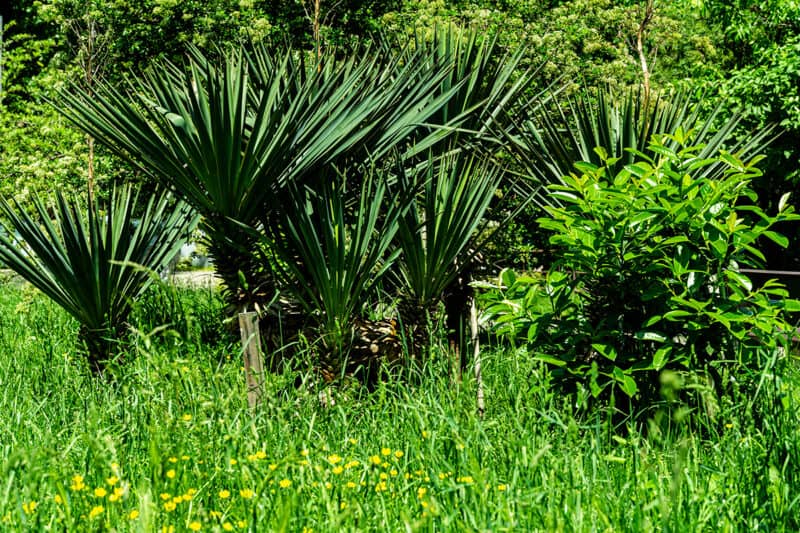
Yucca plants can grow in different environments, depending on the species. Adam’s Needle will thrive in zones 5 to 10, while Banana Yucca will thrive in zone 3. Others are best in zones 6 to 11. See what is best for where you live.
Yuccas prefer slightly alkaline soil with a pH of about 6.0. Add lime if it is lower and measure again. The soil must be free draining and preferably sandy, although most yuccas are forgiving.
If the soil isn’t sandy, plant the yucca on a slightly higher ridge so the water drains away naturally.
Yucca struggles a bit if the soil is too wet. Take a handful of soil and squeeze out the moisture. When you open your hand the soil should crumble away. If it remains in a clump, it is too wet.
Plant in full sun and don’t worry about sheltering it from the wind unless you have very high winds that will make a young plant unstable.
Water periodically, but don’t overdo it.
Propagating Yucca
I honestly can’t think of another plant that is easy to propagate than yucca. Even if you make a mistake, you’re unlikely to fail.
Offsets
I highly recommend this method to create new yucca plants. An offset is a clone of the mother plant that grows out the side of the trunk.
Most yuccas with a trunk grow more than you need, so you can always pot and sell them.
When the offset is about 10 to 12 inches long, cut it off the mother plant. You can do this when they are bigger, but the smaller ones are easier to handle and take better when planted. Leave a 1/4 of an inch of the offset on the mother plant.
You don’t have to do this next bit, but I find it helps with success. I get a saw and scuff the bottom of the offset with the teeth.
Leave it outside to dry slightly. I’ve left them for a week, so don’t rush.
Fill a pot with seed-raising soil and push the offset into the soil about four to five inches deep. Water when the soil dries out and after a few weeks to months, roots will form and you have a whole new yucca.
Rhizomes
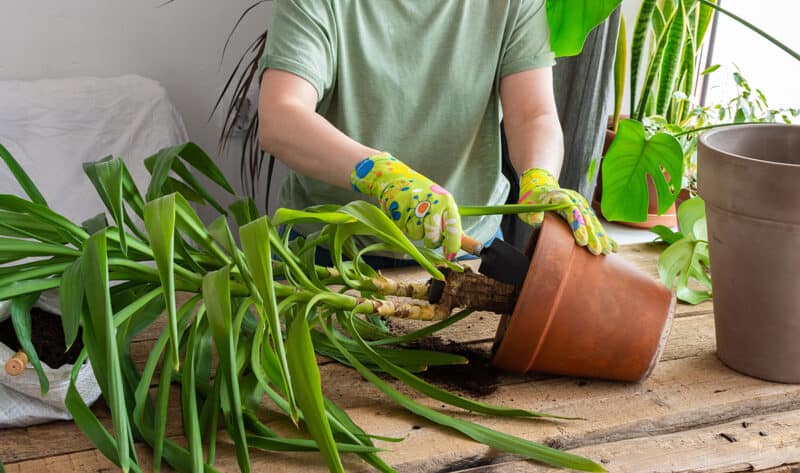
All yucca can be propagated this way. Simply dig down and expose a fleshy root and cut it off. It needs to be about 12 inches long. This won’t damage the plant.
Cut this rhizome into three-inch lengths and plant in good quality seed-raising soil. In about four weeks new roots will form and a new plant will grow from the soil.
This method takes much longer to get a good-sized plant than using offsets.
Trunk
If you have a yucca with a long straight trunk, you can cut this off leaving the original plant at the height you want.
Cut the removed length into 12-inch pieces and put one end in a bucket of water. After 10 days transfer them to a tray that holds water and stand the lengths on the tray with the previously submerged end in the water.
After 24 days or so you will have roots forming on the bottom and buds forming at the top. When the roots are about six or more inches, replant in a pot.
Caring for Yucca
Yuccas don’t need much fertilizer, if any. I generally don’t feed them, but if you think your yucca needs a helping hand, use a well-balanced fertilizer once or twice a year in spring and summer.
Water infrequently, though if you live in an area with plenty of rain like I do, don’t water at all. Just keep an eye on the condition of your yucca.
If your yucca is in a pot inside, water once or twice a month when the soil is dry.
You can prune your yucca once it gets taller than you want it to be. Remove the yucca from its pot and cut it at the height you desire.
Repot the rooted end in fresh potting soil. It will soon grow back to its former glory at the size you want.
With the foliage top, remove the leaves except for a few at the top. Use the water method described in the trunk propagation above to form roots and replant.
You can use the same method for an outside plant.
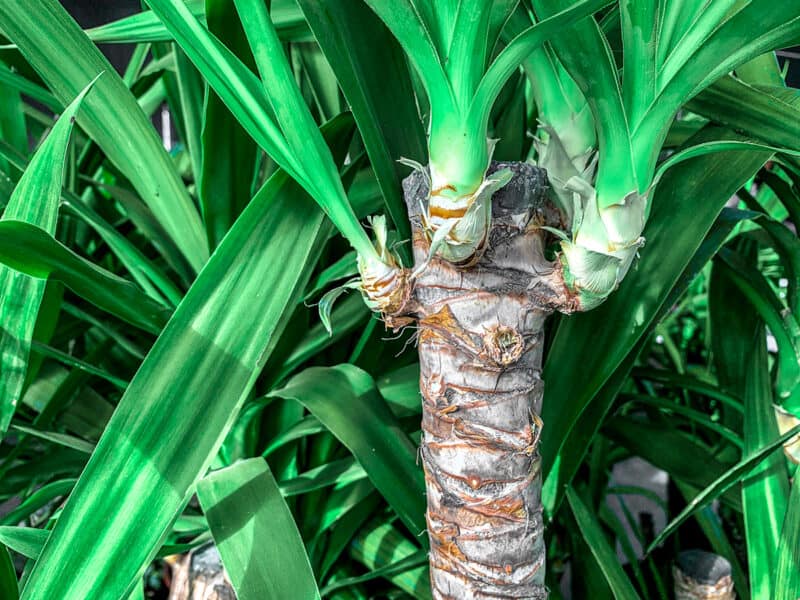
I like to remove the lower third of leaves on my yucca trunks outside. This creates a tree-like appearance. In a couple of weeks, the area where the leaves were removed will form a protective covering like the rest of the trunk.
Common Problems and Solutions for Growing Yucca
Yuccas really are a near bulletproof plant and they look great as an ornamental in a pot or as a landscape specimen. Whether you are a beginner or experienced gardener, you won’t be disappointed in yuccas ability to just get on and grow.
But that doesn’t mean they’re completely problem-free. You might run into some of the following issues, particularly if your plants are stressed.
Agave Plant Bug
These are sapsuckers that leave a telltale brown mark where they damage the foliage. Use insecticidal soap, though it may take several applications.
Aphids
Even the indestructible yucca can fall prey to these prolific pests. Read our article on how to deal with aphids here.
Yucca Weevil
This is probably the most serious pest for yuccas. They burrow into the crown and are near impossible to remove once an infestation starts. Keep your plants as healthy as possible to avoid them becoming susceptible. Regular treatments of neem oil may help to prevent them.
Scale
I have heard scale do sometimes attack yucca. Read our scale article here.
Make Yucca Soap
You can make soap from most species of yucca using the root and the leaves. To make soap out of the yucca leaf, remove a leaf and scrape off the waxy green exterior. Put the scrapings in a jar and fill about with water. Shake the jar for about a minute and then strain out the green bits. You can use this liquid as soap or shampoo.
